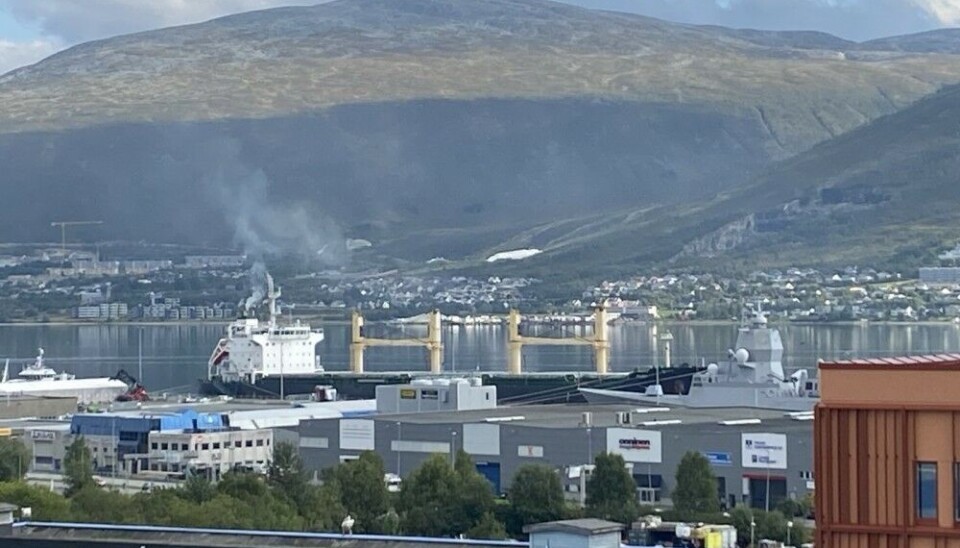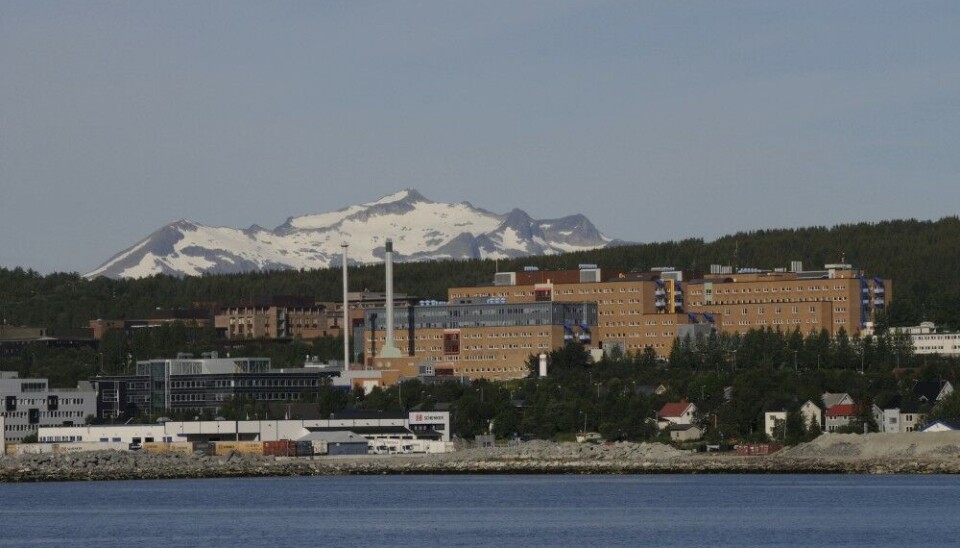
Cargo of ammonium nitrate got port of refuge next to University Hospital of North Norway
The vessel came from Russia’s northern port of Kandalaksha and carries 20,000 tons of the hazardous material ammonium nitrate known from many explosions in the past, including the disastrous 2020-Beirut blast.
The 183 meter long general cargo vessel Ruby has a death weight of 37,039 tons and is loaded with 20,000 tons of ammonium nitrate.
Nearby is thousands of students at the campus of UiT The Arctic University of Norway.
The University Hospital of North Norway with some 6,500 employees and beds for about 600 patients is even closer, less than 500 meters from the potentially dangerous cargo.
“We have made an inspection onboard and talked with the crew. Our examination have not identified any changed risk associated with the ship’s cargo,” says Håvard Malmedal with the Tromsø fire and rescue service to the Barents Observer.
Malmedal says his brigades have a close cooperation with other emergency- and preparedness services in Tromsø and are well prepared to handle the risks.
A Norwegian navy frigate is now moored next to the Ruby. It is unclear why the warship arrived at site Tuesday before noon.
Ammonium nitrate is used in fertiliser and explosives, but more and more countries are nowadays phasing out its use in consumer applications due to concerns over its potential for misuse.
Beirut blast
After the tragic explosion in Beirut four years ago that killed 218 people and injured more than 7000, eyes were put on risk-assesment also other places in the world. The Norwegian Directorate for Civil Protection (DSB) published a detailed list outlining safety measures to be taken. A scientific report for government regulations was made.
The 20,000 tons onboard Ruby is seven times more than the 2,750 tons that exploded at the harbour storage in Beirut.
Kandalaksha
Russia is one of the world’s largest exporter of ammonium nitrate. Up north, the port of Kandalaksha on the coast to the White Sea is used for shipping to world markets. The Kola Peninsula is a main source to fertilizer ore mined in the Khibiny mountains, but production also takes place at other locations in Russia.
Stormy weather
According to the tracking data on MarineTraffic, the Maltese flagged Ruby sailed out of Kandalaksha on August 22 with Las Palmas in the Atlantic as destination.
Outside the coast of northern Norway, Ruby got problems. On Monday August 26 and called for permission to sail into sheltered waters. At the time, a storm with wind up to 25-30 meters per second hit the coast and waves were high.
Spokesperson Hanne Olafsen with the Norwegian Joint Headquarters says to the Barents Observer that port of refuge was granted for the vessel.
“The military approved place of shelter based on the application.”
According to newspaper Nordlys, the vessel stayed inside Vannøya north of Tromsø for several days before she on Sunday was escorted by two Norwegian tugs to port in Tromsø.
The Ruby sailed into Tromsø with own engines and it is It is not immediately clear what emergency the ship claims.
Norway updated its regulations on sailings and port calls by foreign vessels in 2018, requiring a 24 hours notice on vessel details include the content of the cargo.
Tromsø Port Authority has not replied to questions from the Barents Observer about which risk assessments were made up front of choosing the industrial port of Breivika and what information local authorities had in regards to the amount and content of the hazardous cargo coming from Russia.
Ordered to leave
Troms Police District says in a press statement Tuesday afternoon investigation is initiated aimed to find out the surrounding circumstances. Meanwhile, the Ruby is ordered to leave its current harbour and sail to a position where she can stay at anchor until repair is done.

In September 2019, a Russian trawler caught fire at the same harbour causing UNN to consider closing parts of the hospital due to the smoke and danger of toxic gases.
Russia counts for two-third of the global production of ammonium nitrate, and although many countries have banned the sale of it as fertiliser, others are buying big loads exported out of the northern harbour of Kandalaksha.















